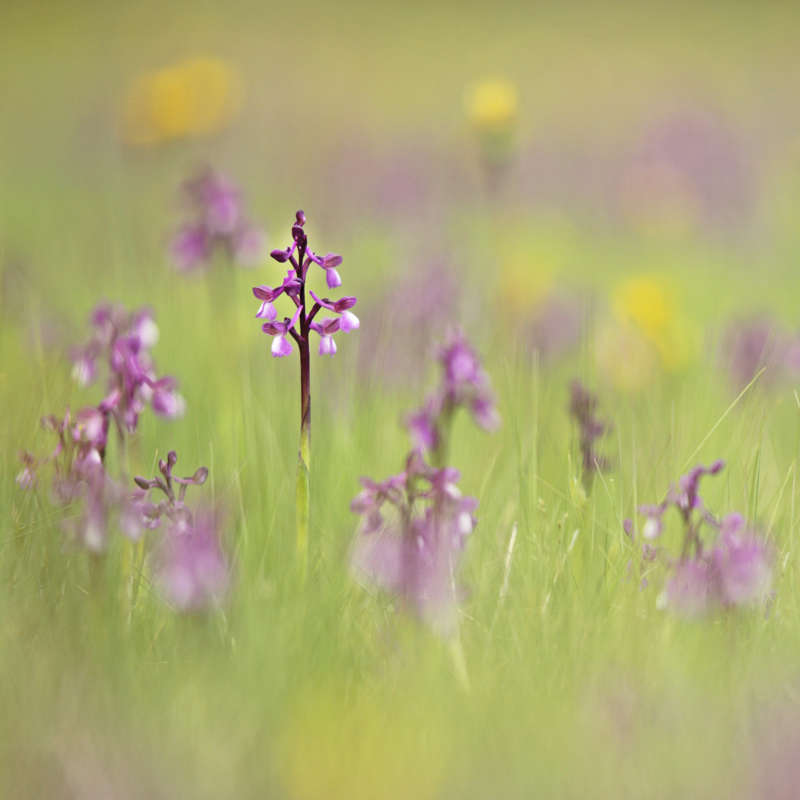Flights of the Mediterranean bush: analyzing the photograph

Hoopoe (epupa epic) It is a trans-Saharan migratory bird, quite common in the grasslands and mountains of the Mediterranean.. Recognizable by its song, feathers and striking undulating flight, we can identify this species as soon as it takes flight or hear its song.
We introduce hide surrounded by oak trees, a hideout where photographers can hide without being noticed, first thing in the morning to take advantage of the first light of the day. In this enclave we observe that a hoopoe specimen often flies over its usual perch. Its trajectory around this area tends to follow similar patterns, and this benefits us when photographing it because it gives us the ideal point of view and perspective for the shot we have in mind.
Shooting data: ISO 1250; f/3.2; 1/10000 sec; Sony A9III camera; Sony FE 300mm F2.8 OSS lens; focal length 200 mm; tripod with gimbal
Using this photograph, we are trying to record the rapid departure of the hoopoe from its settlement, since by continuously making the same journey, we can predict the direction in which it will go. In this case, we have a modern camera that allows automatic high-speed focus capture with eye tracking of the subject, as well as shutter power and shooting speed to produce very efficient results.
This innovative photography equipment currently on the market has completely changed the existing rules regarding photography techniques. However, we’ll explain later how the same photo can be taken using a more common DSLR camera.
The light that this time of day gives us is more than enough for the shot. This aspect allows us to set the aperture to f/3.2 and set the shutter speed to 1/10,000 of a second, with the ability to shoot at 120 frames per second. and that the camera is not blocked.
A priori, this seems to be an overestimated shutter speed, since at 1/2500 or 1/5000 we could get a similar image. However, at a shutter speed of 1/10000 and a frame rate of 120 fps In a short time we have the ability to take pictures two or three times faster than in a standard situation.. That means we were able to get three more images of the bird’s path than if we had worked at half speed.
Thus, This image is chosen from among many others that make up a series where the bird’s pose, wing position and feathers are perfect. In addition, it also offers an attractive frame in which the hoopoe completes the slanted composition, reminiscent of an arrow crossing the image.
Similarly, this image can be made using SLR camera digital, adjusting the focal plane pre-focus, determining the path and position of the subject around a conventional perch, with a shutter speed of 1/5000 or 1/2500 second.
In the case of photography, focusing was achieved by tracking the eyes from the moment the hoopoe entered the frame until the moment it left it. Despite the use of modern equipment, the animal’s high speed requires a quick reaction in order to stay ahead of the bird and not clip its wings or take over its entire body.

